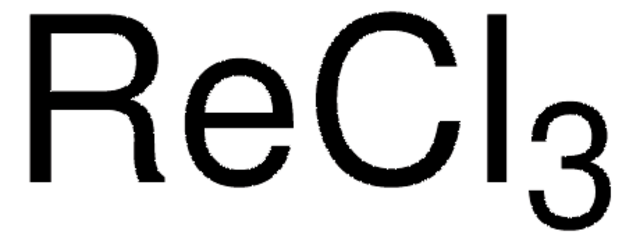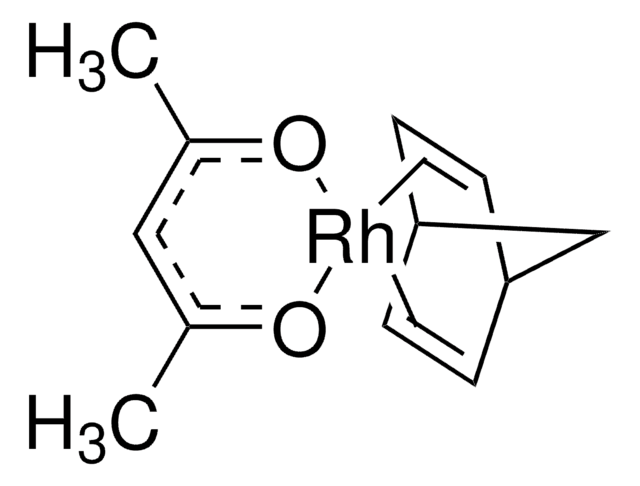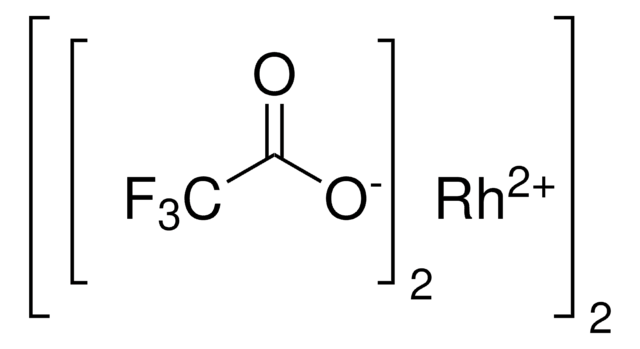206261
Rhodium(III) chloride hydrate
Rh 38-40 %
Synonym(s):
Rhodium trichloride hydrate
About This Item
Recommended Products
form
powder or crystals
Quality Level
composition
Rh, 38-40%
reaction suitability
core: rhodium
reagent type: catalyst
mp
100 °C (dec.) (lit.)
SMILES string
O.Cl[Rh](Cl)Cl
InChI
1S/3ClH.H2O.Rh/h3*1H;1H2;/q;;;;+3/p-3
InChI key
HSSMNYDDDSNUKH-UHFFFAOYSA-K
Looking for similar products? Visit Product Comparison Guide
application
signalword
Danger
hcodes
Hazard Classifications
Acute Tox. 4 Oral - Aquatic Acute 1 - Aquatic Chronic 1 - Eye Dam. 1 - Met. Corr. 1 - Muta. 2
Storage Class
8A - Combustible corrosive hazardous materials
wgk_germany
WGK 3
flash_point_f
Not applicable
flash_point_c
Not applicable
ppe
dust mask type N95 (US), Eyeshields, Gloves
Certificates of Analysis (COA)
Search for Certificates of Analysis (COA) by entering the products Lot/Batch Number. Lot and Batch Numbers can be found on a product’s label following the words ‘Lot’ or ‘Batch’.
Already Own This Product?
Find documentation for the products that you have recently purchased in the Document Library.
Customers Also Viewed
Our team of scientists has experience in all areas of research including Life Science, Material Science, Chemical Synthesis, Chromatography, Analytical and many others.
Contact Technical Service
















